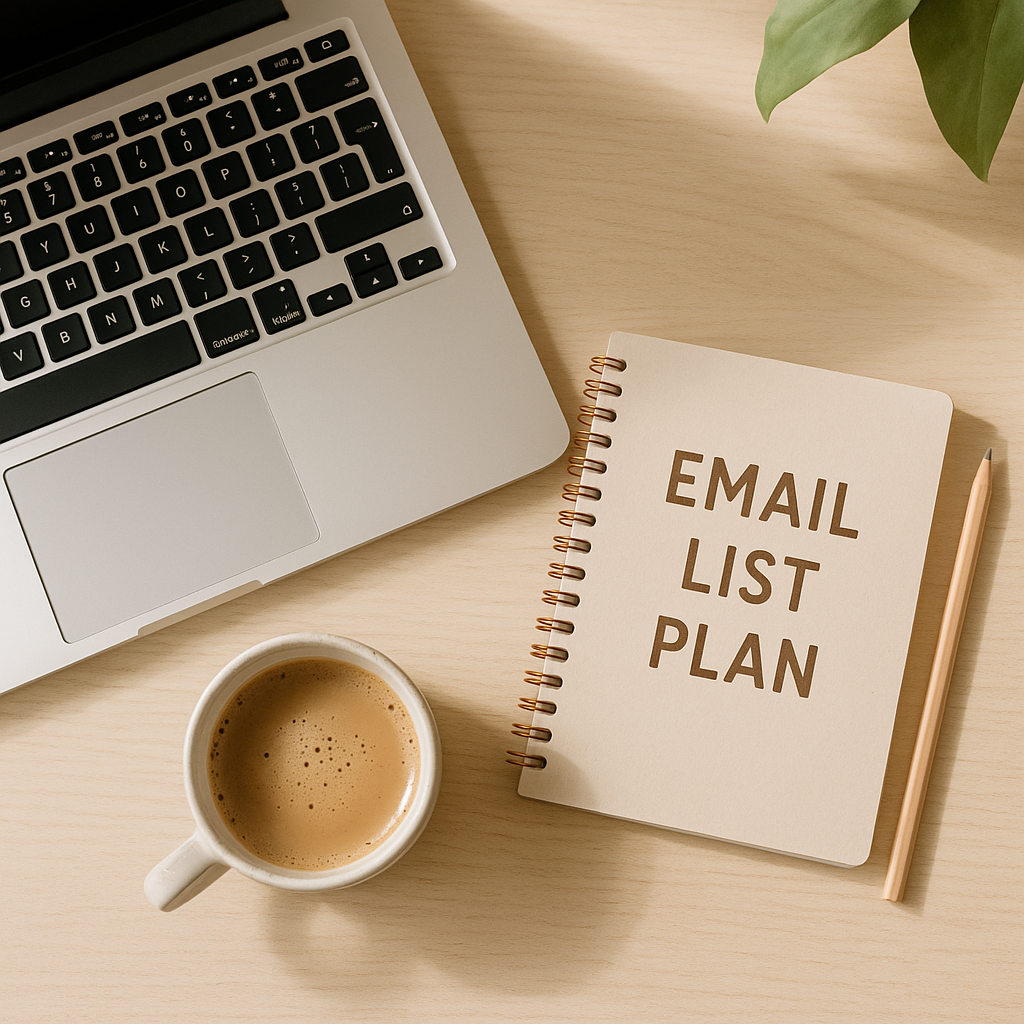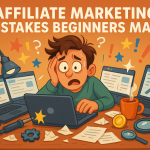This email list beginner guide covers 5 things I wish I knew before starting to build my own email list, which as a beginner can feel extremely overwhelming. When I first heard “the money’s in the list,” I thought I’d cracked the digital marketing code.
I signed up for AWeber email automation, stared at the dashboard for about ten minutes, then promptly ignored it for the next few months.
Sound familiar?
After a year of trial, error, and plenty of “what the hell am I doing?” moments, I’ve learned that building an email list as a beginner isn’t about having all the answers upfront.
Here’s what I wish someone had told me before I started my email marketing journey.
1. Email List Beginner Tip: Start Simple or You’ll Never Start at All
I wasted weeks obsessing over complex funnel diagrams and trying to recreate some guru’s 47-step email sequence.
What actually got me moving?
➡️ One simple landing page
➡️ A lead magnet I was genuinely proud of
➡️ A basic follow-up sequence that sounded like me talking to a friend
The fancy stuff can come later. Right now, you just need something that works.
Real talk: Your first email funnel doesn’t need to impress anyone. It just needs to capture emails and deliver value. Keep it stupidly simple.
2. Consistency Beats Perfection Every Single Time
I used to draft emails, then delete them because they weren’t “good enough.”
Or I’d send one newsletter, feel proud for five minutes, then go radio silent for three weeks.
Here’s what I learned the hard way: showing up consistently (even imperfectly) builds more trust than sending the “perfect” email once a month.
Your subscribers don’t need Shakespeare. They need to hear from you regularly so they remember who you are when you actually have something important to share.
Even a short, honest update beats radio silence every time.
Quick aside: If you’re finding this helpful, I share more honest digital marketing tips like this in my weekly newsletter. Check out the signup in the sidebar – it’s for people who are tired of getting nowhere with all the guru nonsense.
3. You Can Promote Without Being That Guy
I avoided mentioning my freebies or any affiliate links because I didn’t want to sound “salesy.”
Turns out, that was doing my subscribers a disservice.
People join your list because they want recommendations from someone they trust. When you find tools or resources that genuinely help, sharing them isn’t pushy—it’s helpful.
What works better than hiding your links:
✔️ Mentioning tools you actually use in your stories
✔️ Explaining why something worked for you (not just “here’s a link”)
✔️ Being upfront about affiliate relationships
Your audience can smell BS from a mile away. But they appreciate honest recommendations from someone who’s actually tested the waters.
4. Don’t Get Lost in the Tagging Maze
This might be controversial, but hear me out: if you’re just starting, forget about complex tagging systems.
I spent days setting up tags for every possible scenario. Clicked this link, downloaded that freebie, opened but didn’t click…
None of it mattered when I had twelve subscribers.
Start with the basics: tag people when they grab your lead magnet, send them a relevant follow-up sequence, and focus on creating content they actually want to read.
The fancy segmentation can wait until you have enough subscribers to make it worthwhile.
5. Your Lead Magnet Is Your First Impression
I rushed my first freebie together in an afternoon, and it showed.
Generic title, boring content, zero personality. No wonder people weren’t signing up.
Everything changed when I created something I’d genuinely want to keep myself. Something specific, actionable, and actually useful.
Your lead magnet isn’t just a bribe to get email addresses. It’s proof that you know what you’re talking about and that your future emails will be worth opening.
Take the time to make it good. Your conversion rates will thank you.
The Email Marketing Tools That Actually Work
After testing different platforms, I landed on AWeber. It’s straightforward, doesn’t require a computer science degree to figure out, and handles everything I need without the overwhelm.
Plus, their customer support actually responds when you’re stuck at 11 PM wondering why your form isn’t working.
Free Resources to Get You Started
Not sure where to begin with your email marketing strategy? I’ve put together some resources that cover the basics without the fluff:
Get My Free Resources
I’ve created several free guides covering the basics – from building your online presence to affiliate marketing success.
The best part? When you join my weekly newsletter, you’ll get access to all my free resources plus ongoing tips that I don’t share anywhere else.
👉 Check out the signup in the sidebar to get started.
If you haven’t started your blog yet, have a read of my post on How to Start a Blog (Without Tech Overwhelm or Confusion to get a good idea of what is required to set one up.
The Bottom Line
Building an email list isn’t about having thousands of subscribers or the perfect funnel setup.
It’s about starting where you are, with what you have, and learning as you go.
Your first email doesn’t need to be perfect. Your tenth probably won’t be either. But each one gets you closer to building something real—a direct line to people who actually want to hear from you.
Stop waiting for the perfect moment. Start messy, stay consistent, and build something genuine.
What’s stopping you from starting (or growing) your email list? Drop a comment below—I read every single one.
Affiliate Disclaimer: Some links in this post are affiliate links, which means I may earn a small commission if you make a purchase (at no extra cost to you). I only recommend tools I use myself and genuinely believe will help you build your email list.
Want no-fluff tips for building your online biz?
If this post gave you a lightbulb moment or a sigh of relief, you're not alone — that's exactly why I started sharing what I've learned.
Pop your name and email below and I'll send you beginner-friendly advice, useful tools, and the truth behind what really works online — straight to your inbox, no pressure.
👇 Sign up below and let's do this together.
Affiliate Note: Some of the links above are affiliate links, which means if you decide to purchase through them, I may earn a small commission — at no extra cost to you.
I only recommend tools I truly believe in and use myself. It helps support my blog and keeps the coffee flowing ☕
💬 Over to You:
What’s one thing you wish someone had told you before starting your online business?
I'd love to hear it — just hit reply to any of my emails and tell me, or share it with me over on my Facebook page. I read every single one.
SHARE – If you found this post helpful, why not share it with someone else who’s figuring it out too?


